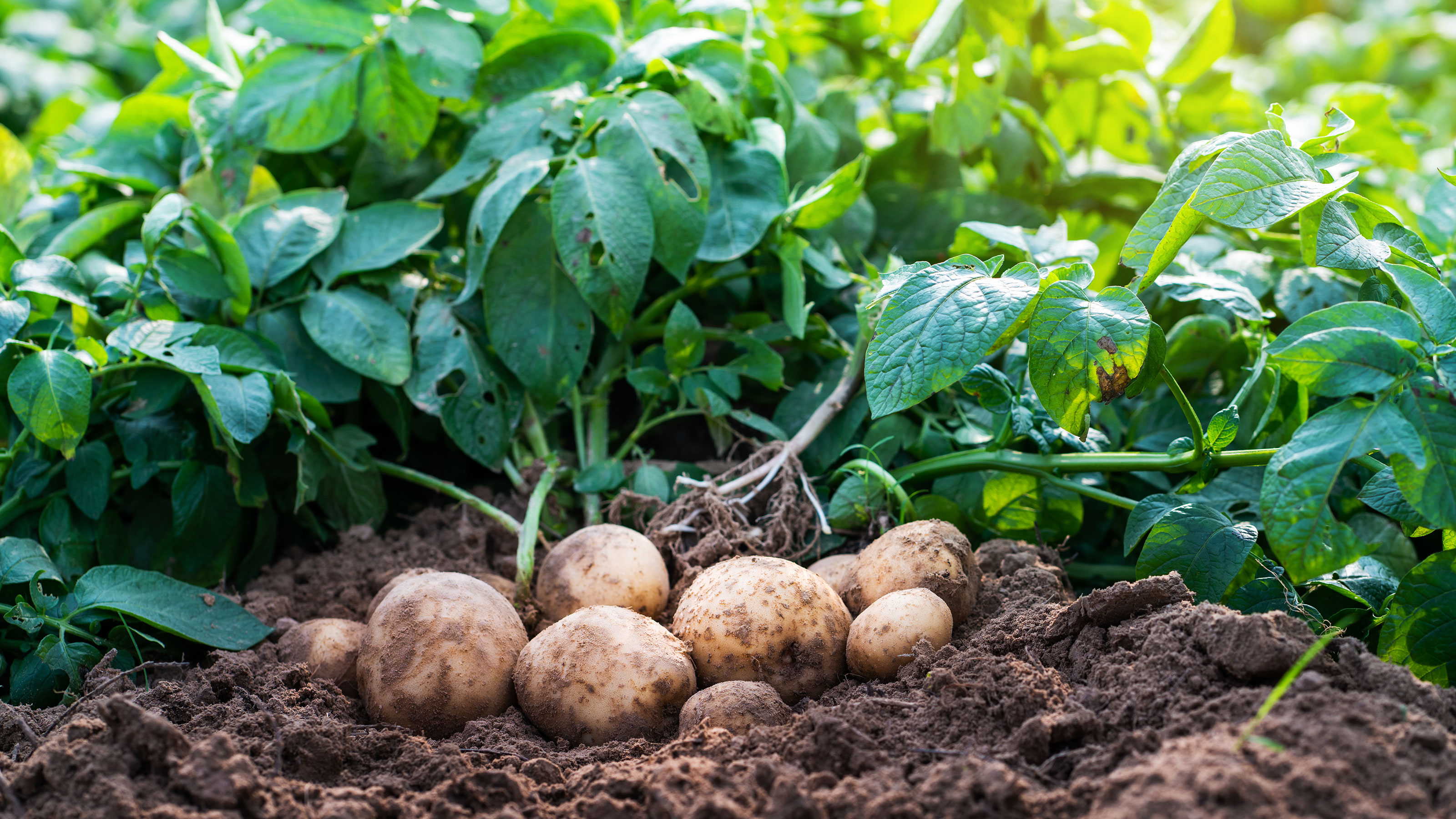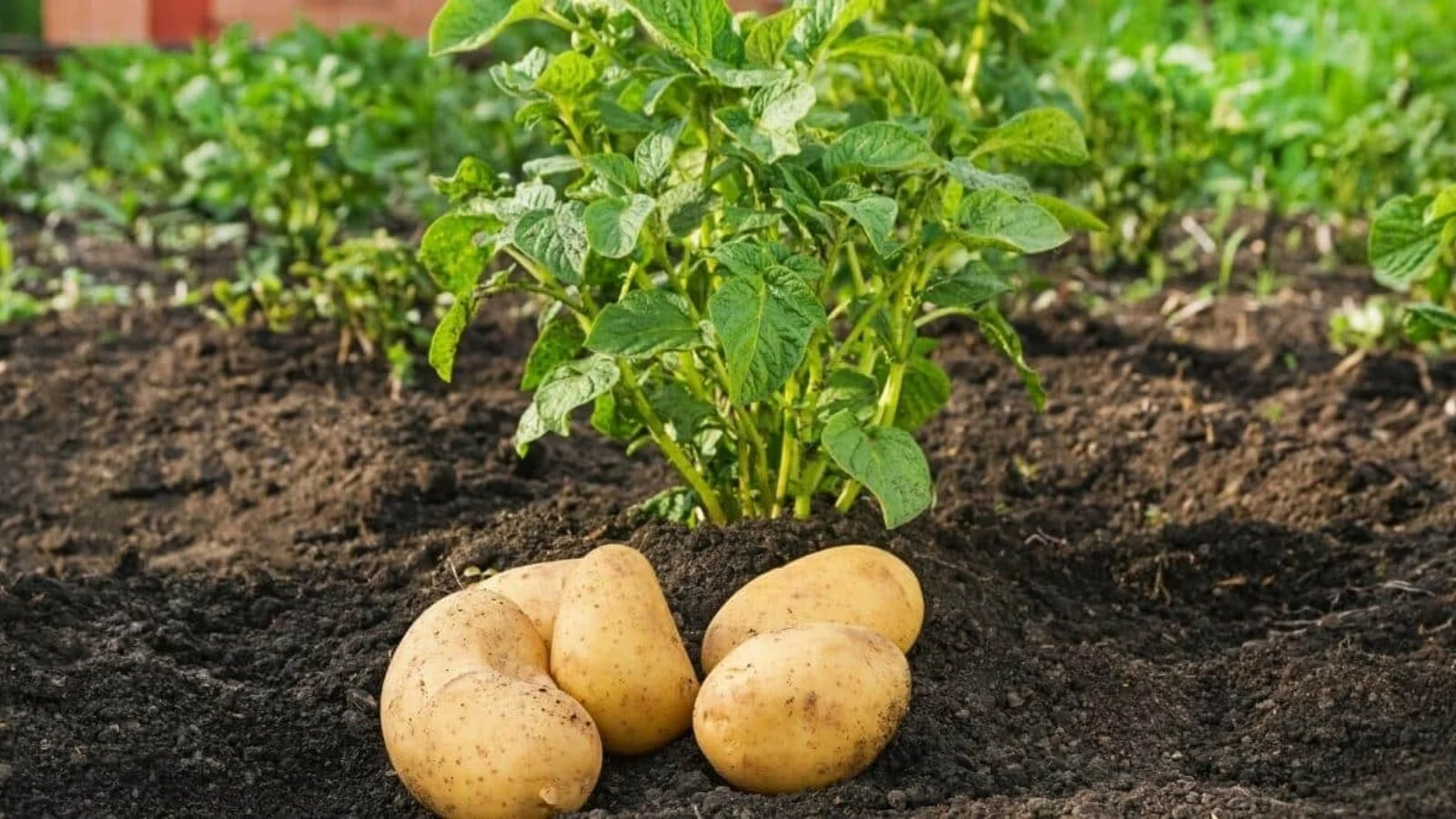32 Companion Plants To Grow With Potatoes
The Ultimate Guide to Boosting Potato Growth, Repelling Pests & Enhancing Soil Naturally
Potatoes are a staple in gardens around the world. Whether you’re growing them in rows, raised beds, or containers, companion planting can significantly improve their health and productivity. But knowing which plants to grow with potatoes—and which ones to avoid—is key.
In this comprehensive guide, you’ll discover 32 excellent companion plants that promote potato growth, naturally deter pests, improve soil conditions, and encourage a more biodiverse and balanced garden ecosystem.

🌱 Why Companion Planting Works for Potatoes
Companion planting is a time-tested gardening technique where certain plants are grouped together to benefit one another. When used strategically, it:
- Reduces pest damage
- Enhances flavor
- Maximizes space
- Attracts beneficial insects
- Improves soil structure and fertility
- Prevents diseases through biodiversity
Because potatoes are nutrient-hungry and vulnerable to pests like Colorado potato beetles, aphids, and fungal diseases, choosing the right companions is crucial.
🥔 What Potatoes Need to Thrive
Before planting companions, understand what potatoes require:
- Sunlight: Full sun (6–8 hours daily)
- Soil: Loose, well-drained, slightly acidic (pH 5.0–6.5)
- Watering: Consistent moisture, especially during tuber formation
- Spacing: 12–15 inches between plants, rows 2–3 feet apart
- Nutrients: High in potassium and phosphorus, moderate nitrogen
✅ 32 Best Companion Plants for Potatoes
Grouped by their primary benefit—Pest Control, Soil Improvement, Pollinator Attraction, or Structural Support—here are the best plants to grow alongside potatoes:
🐛 Natural Pest Control Companions
These plants deter common potato pests like Colorado potato beetles, aphids, wireworms, and nematodes.
- Horseradish
– Repels Colorado potato beetles and improves resistance to disease. - Marigolds
– Secretes nematode-killing compounds into the soil; deters aphids and beetles. - Nasturtiums
– Acts as a trap crop for aphids and beetles; also attracts beneficial predators. - Catnip
– Deters flea beetles and aphids; plant away from vegetables due to its aggressive growth. - Tansy
– Repels flying insects like moths and beetles. Use cautiously—can spread quickly. - Garlic
– Repels aphids, root maggots, and nematodes; provides natural fungicidal benefits. - Chives
– Deters aphids and Japanese beetles; adds mild onion flavor to nearby crops. - Basil
– Deters thrips and aphids; its aroma also masks potato scent from pests. - Coriander (Cilantro)
– Attracts beneficial insects and repels spider mites. - Calendula (Pot Marigold)
– Attracts beneficial insects; secretes compounds that suppress nematodes.
🌾 Soil-Improving Companions

These plants help fix nitrogen, aerate the soil, or prevent erosion—especially useful since potatoes are heavy feeders.
- Bush Beans
– Fix nitrogen in the soil, benefiting potato growth. - Fava Beans
– Excellent nitrogen fixers; also tolerate cooler weather like potatoes. - Peas
– Light feeders that improve soil fertility and structure. - Clover (White or Crimson)
– Grows as a living mulch; fixes nitrogen and suppresses weeds. - Buckwheat
– Scavenges phosphorus, attracts beneficial insects, and suppresses weeds. - Radishes
– Break up compacted soil with deep taproots; also help deter beetles. - Turnips
– Fast-growing; breaks up soil and can be harvested before potatoes mature.
🐝 Pollinator & Beneficial Insect Attractors
While potatoes are self-pollinating, bringing in predatory and pollinating insects improves overall garden health.
- Borage
– Attracts pollinators and predatory wasps; enhances nearby crop vigor. - Yarrow
– Attracts ladybugs and lacewings, which feed on aphids and soft-bodied pests. - Dill
– Excellent for attracting beneficial insects such as hoverflies and parasitic wasps. - Fennel
– Attracts pollinators and predators but should be grown near, not next to, potatoes (can be allelopathic). - Chamomile
– Improves flavor and vigor of surrounding plants; attracts beneficial insects.
🧱 Physical Support & Shade Providers
Some taller companion plants provide partial shade, wind protection, or vertical support.
- Corn
– Acts as a windbreak; good if you’re planting potatoes in windy areas. - Sunflowers
– Attract pollinators and create microclimates but plant at a slight distance to avoid nutrient competition. - Lettuce
– Grows quickly and shades the soil, helping retain moisture around potato roots. - Spinach
– Early season leafy green that matures before potatoes bulk up. - Kale
– Grows in similar conditions and has non-competitive root systems. - Endive
– Acts as a low-growing mulch, helping suppress weeds.
🌿 Aromatic & Culinary Herb Allies

These herbs not only protect potatoes but also elevate your harvest with flavor and pest management.
- Rosemary
– Deters cabbage moths and certain beetles; grow at bed edges. - Oregano
– Ground-covering herb that attracts pollinators and repels pests. - Thyme
– Low-growing, drought-tolerant; deters hornworms and improves garden biodiversity. - Parsley
– Attracts predatory insects and ladybugs while improving soil structure.
❌ Plants to Avoid Near Potatoes
Not all plants are friendly to potatoes. Avoid growing these nearby:
- Tomatoes: Share similar diseases (blight) and compete for nutrients.
- Peppers: Another nightshade; increases risk of pest/disease transfer.
- Eggplants: Same family as potatoes, attracting Colorado potato beetles.
- Cucumbers: Compete for water; potatoes can shade them out.
- Pumpkins/Squash/Melons: Sprawling vines compete for space and nutrients.
- Carrots: Both root crops compete underground, reducing yields.
- Asparagus: Disrupts potato’s root zone; long-term perennials don’t pair well with annual potatoes.
🧠 Advanced Tips for Companion Planting with Potatoes

✅ Rotate Crops Annually
Avoid planting potatoes in the same soil as the previous year’s nightshades to prevent disease buildup (especially late blight and early blight).
✅ Use Trap Crops Strategically
Grow nasturtiums or radishes as trap crops around the outer perimeter to lure pests away from your potatoes.
✅ Layer Crops by Maturity
Combine fast-growing greens like lettuce or spinach with slow-maturing potatoes to maximize garden space without overcrowding.
✅ Practice Succession Planting
Harvest early crops like peas or radishes and follow them with potatoes for full-season soil use.
✅ Mulch Well
Companions like clover and calendula can serve as living mulch. You can also interplant low-growing herbs like thyme.
📋 Common Problems & Companion Plant Solutions
| Problem | Cause | Companion Plant Solution |
|---|---|---|
| Colorado Potato Beetles | Beetles feeding on leaves | Horseradish, catnip, tansy, marigold |
| Aphids | Sucking sap from foliage | Garlic, chives, basil, nasturtium |
| Nematodes | Soil pests damaging tubers | Marigolds, calendula |
| Soil nutrient depletion | Potatoes are heavy feeders | Beans, clover, peas |
| Poor pollinator activity | Limited insect presence | Borage, yarrow, dill |
| Weed competition | Bare soil between rows | Lettuce, spinach, white clover |
Table of Contents
❓ FAQ: Companion Planting with Potatoes
Q1: What’s the best companion plant overall for potatoes?
Marigolds—they repel nematodes, beetles, and aphids while being easy to grow alongside potatoes.
Q2: Can I grow beans with potatoes?
Yes! Bush or fava beans are great companions. Avoid climbing beans—they may compete for space and light.
Q3: Do potatoes attract a lot of pests?
Yes, particularly the Colorado potato beetle, aphids, and nematodes. That’s why companion planting is so useful.
Q4: What herbs help potatoes the most?
Garlic, chives, basil, oregano, and thyme are especially beneficial for pest deterrence and soil enhancement.
Q5: Can I plant potatoes with tomatoes or peppers?
It’s not recommended. All three are nightshades and prone to similar diseases and pests. They also compete for the same nutrients.
Q6: What flowers work best with potatoes?
Marigolds, nasturtiums, calendula, and borage. They attract beneficial insects and repel pests.
Q7: How can I protect potatoes organically?
Use trap crops like radishes and nasturtiums, and plant aromatic herbs like catnip, basil, and garlic nearby.
Q8: Can I grow lettuce with potatoes?
Yes! Lettuce helps shade soil early on and grows fast, making it an ideal early-season companion.
Q9: Will companion planting increase potato yield?
Absolutely. Proper companions can reduce pest pressure, improve soil health, and enhance plant vigor—leading to larger harvests.
Q10: What are the best cover crops before planting potatoes?

Buckwheat, clover, and peas enrich the soil and improve its structure before potato planting.
🌟 Final Thoughts
Companion planting is a natural and effective way to help your potatoes thrive without relying on synthetic pesticides or fertilizers. From pest control to soil improvement and space efficiency, the 32 companion plants listed above serve diverse roles that support healthier, more productive potato plants.
By planning your garden layout carefully and pairing potatoes with the right neighbors, you’ll boost yields, reduce problems, and enjoy a more vibrant and self-sustaining garden.

